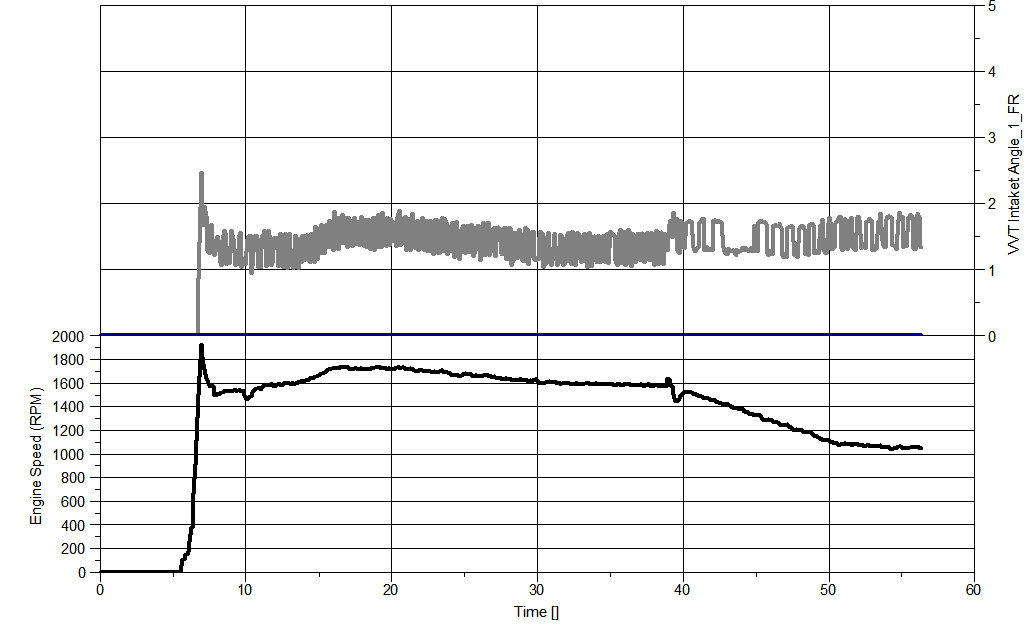Here is some stuff on cold starts on this engine (coolant temperature around 23C), originally posted as part of this thread:
http://www.ft86club.com/forums/showthread.php?t=55676
These charts and comments I made are from data supplied by @
mad_sb , who was running E85 at the time.

Here's how you can divide the cold start up. You have cranking, run up, flare, then a transition to catalyst heating mode. There are different priorities and goals in each portion of the start event. These are related to starting time, quality of initial combustion, engine out emissions, and catalyst heating energy.
Quote:
Originally Posted by mad_sb

notice that the target idle rpm does not seem to pay attention to the target idle tables shown here during the retarded idle phase..
|
There's probably a different set of controls that hasn't been reverse engineered at this point. That's Injection Mode 3, which must be the mode for stratified combustion/catalyst heating.

Look at the middle plot. Black line is injection mode--you can see it changing during the different phases of the start. Notice how that corresponds to changes in start of direct Injection (purple) and spark timing (top line). So during injection mode 3, you have retarded spark, late injection timing in the compression stroke for stratified combustion, and a high idle. In injection mode 1 you can see that we are back to intake stroke injection with the early start of injection. Based on what I am seeing so far in this log, the AVCS isn't really doing anything in the starting process. Keep in mind that coolant temperature is about 23C. It might behave differently at other temperatures.

So intake cam is gray line, blue line is exhaust cam. Intake cam barely moved, exhaust is at 0. 1 or 2 degrees movement isn't going to create meaningful overlap. Maybe under other conditions the cams move. Usually, with a regular oil pressure hydraulic phaser you'll see the phaser move after the engine starts if it was tuned for cold start cam phasing. It takes some time for oil pressure to build up, and the cam phaser is difficult to control when cold.
If the engine has an electric cam phaser it can move immediately. Some engines have a regular oil pressure operated phaser but they can park the cam into an overlap position for cold start. This is to get immediate reburn of HC emissions during cranking--saves money on an expensive and restrictive cat. Other times you'll see the cams move on cold start, but it doesn't actually dial in overlap. It depends on how far the cam moves and what the grind of the cam is. The overlap can cause unstable combustion...it often needs certain tricks to stay stable, like late intake valve opening, tumble or swirl control valve, or restrictive intake port.

This graph shows a high pressure start, where the fuel pump ramps up pressure as fast as possible. 12-13 MPa seen here is typical on direct injection. It's needed for proper atomization of the fuel during stratified combustion. It's also possible for the whole engine to run at low fuel pressure (PFI pressures) as a failsafe. Think about all those BMW N54 engines that were driving around with jacked up fuel pumps back in the day.